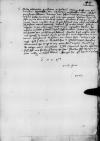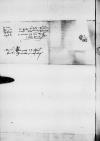List #614
Cornelis DE SCHEPPER do Ioannes DANTISCUSBruges, 1531-04-15
| odebrano Ghent (Gandavum), [1531]-04-15 Rękopiśmienne podstawy źródłowe:
Pomocnicze podstawy źródłowe:
Publikacje:
| ||||||||||||||
Tekst + aparat krytyczny + komentarzZwykły tekstTekst + komentarzTekst + aparat krytyczny
Reverendissimo in [Chris]to Patri et Domino, domino
Salutem.
Doleo vehementer, quod nescierim te
Visurus es, ut alia omittam, globum magnum[4] et quo nullum maiorem vidisti umquam neque tam bene depictum. Ego rursus te comitabor
Litteris Ciceronianis conabor respondere, si quando sese mihi facilem(!) praebiturus est
Commendat sese tibi
Eiusdem Dominationis Vestrae Reverendissimae humilis inservitor
[2 ] Easter 1531: 9 April
[3 ] This is the same invitation as in De Schepper’s letter of 13 April 1531 (cf.
[4 ] Probably the terrestrial globe constructed for Marcus Laurijn (person 163) (cf. also IDL ...) [Note to be elaborated]
[5 ] Note on Bruges humanist network around Marcus Laurijn to be elaborated

